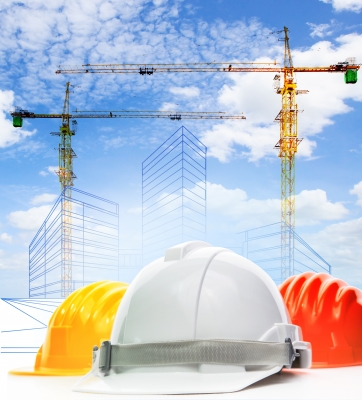 A total of 64 big-ticket projects in the Philippines ranging from major road networks, railway systems, and bus rapid transit systems to airport and seaport modernization are now either to be implemented or in the pipeline, making up the government’s envisioned “Golden Age of Infrastructure.”
A total of 64 big-ticket projects in the Philippines ranging from major road networks, railway systems, and bus rapid transit systems to airport and seaport modernization are now either to be implemented or in the pipeline, making up the government’s envisioned “Golden Age of Infrastructure.”
According to the Department of Finance (DOF), projects for construction or improvement are broken down as follows: 20 roads; two bridge; four flood-control projects; two dams; one road transport IT infrastructure; 23 rail systems; seven airports; two transport terminals; and three bus rapid transit systems.
Aside from these, 15 different ongoing projects are being implemented by the Department of Public Works and Highways (DPWH) under locally funded, official development assistance (ODA), or public-private partnership (PPP) schemes.
These ongoing projects include the Mandaluyong Main Drainage Project (Phase II); Central Luzon Link Expressway, Phase I, Tarlac-Cabanatuan, Nueva Ecija; Integrated Disaster Risk Reduction and Climate Change Adaptation Measures in the Low Lying Areas of Pampanga Bay; Tarlac-Pangasinan-La Union Expressway (Binalonan-Rosario Section); Flood Risk Management Project (FRIMP) in Cagayan de Oro River; and the Sen. Gil Puyat Ave.-Paseo De Roxas/Makati Ave. Vehicle Underpass Project.
Besides these current projects, DPWH is also set to either oversee or implement 10 infrastructure projects in Metro Manila and Mindanao. These are the Bonifacio Global City-Ortigas Center Link Road Project; UP-Miriam-Ateneo Viaduct along C-5/ Katipunan; Metro Manila Priority Bridges Seismic Improvement Project (Guadalupe Bridge and Lambingan Bridge); Widening/Improvement of Gen. Luis St.-Kaybiga-Polo-Novaliches; Cavite-Laguna Expressway; NLEX-SLEX Connector Road; Metro Manila Interchange Construction Project VI; Davao City By-Pass Construction Project (South Section road and Center Section tunnel; Panguil Bay Bridge; and Phase 1 of the Metro Manila Flood Management Project.
The Department of Transportation (DOTr), on the other hand, has awarded six PPP projects, and is either bidding out or about to bid out 10 PPP projects, according to Transport Secretary Arthur Tugade.
PPP projects that are either undergoing or about to undergo bidding are the development, operation, and maintenance of Bacolod-Silay, Davao, Iloilo, Laguindingan and New Bohol (Panglao) airports; Light Rail Transit (LRT) Line 2 Operations and Maintenance; Road Transport Information Technology Infrastructure (Phase II); LRT Line 6; Philippine National Railways (PNR)–South Line; and Ninoy Aquino International Airport (NAIA) Development.
The DOTr, through a combination of ODA and PPP, is also implementing and developing a total of 23 rail projects that aim to greatly expand the country’s rail system from the current 77 kilometers to over 1,750 km.
The 10 ongoing rail projects include PNR North (Manila-Malolos), PNR South Commuter PPP Project (Manila-Los Banos), PNR South Long Haul PPP Project (Los Baños-Legaspi, Matnog, Batangas Port), Line 1 Cavite Extension PPP Project (Baclaran-Niog), Automated Fare Collection System PPP Project (Beep Card), Line 2 O&M PPP Project, Line 2 East Extension (Santolan-Masinag), Line 2 West Extension (Recto-Pier 4), Line 6 PPP Project (Niog-Dasmarinas), and Line 7 PPP Project (San Jose Del Monte-North EDSA).
Another 13 rail projects are being developed by DOTr. These include the Mindanao Railway (Circumferential), Cebu Railway (5 lines), Panay Railway, Line 4 (Taytay-Manila) PPP Project, Line 5 (Pasay-Makati-Taguig) PPP Project, Line 8 (Quezon City-Manila) PPP Project, PNR North Phase 2 (Malolos-Clark), Mega Manila Subway Project, and Subic-Clark Railway.
Aside from extensive rail development, DOTr is also installing at least three Bus Rapid Transit (BRT) systems, establishing 77 km of segregated busways and improving pedestrian and bikeway facilities.
These include the Cebu BRT, Quezon Avenue BRT, and Central Corridor (EDSA) BRT. Several other BRT systems and corridors are also currently being studied by DOTr.
Alongside these projects, there are 12 other DPWH projects in the pipeline.
These include the Panay-Guimaras-Negros Link Project; EDSA-Taft Flyover; Central Luzon Link Expressway, Phase II, Cabanatuan-San Jose, Nueva Ecija; Flood Protection Works in the Marikina River including Retarding Basin; and the Dalton Pass East Alignment Alternative Road Project.
Another six big-ticket projects funded through PPPs are also either being proposed by the DPWH or are already in the pipeline.
These include the R-7 Expressway, Manila Bay Integrated Flood Control, Coastal Defense and Expressway, and the Laguna Lakeshore Expressway Dike.
According to DPWH Secretary Mark Villar, all these projects will significantly boost the country’s growth and raise productivity and competitiveness.
The Department of Budget and Management (DBM) projects that the national government will raise the infrastructure budget (national level) from P552 billion in 2017 to P1.470 trillion by 2022, or from 3.5% to 5.7% of the gross domestic product (GDP). In the same period, the total infrastructure budget—both national and local—is projected to grow from P861 billion in 2017 to P1.832 trillion by 2022, or from 5.4% to 7.1% of GDP.
“The significant increase in the infrastructure budget will be used to fund ongoing and proposed major infrastructure projects, which are vital for sustaining high and inclusive growth,” DPWH’s Villar said.
Budget Secretary Benjamin Diokno said the incremental revenues to be raised from the first package of the DOF-proposed Comprehensive Tax Reform Program amounting to some P163 billion in 2018 is consistent with the planned increase in the budget deficit from 2.7% of GDP in 2016 to 3% of GDP beginning 2017.
Image courtesy of khunaspix at FreeDigitalPhotos.net





